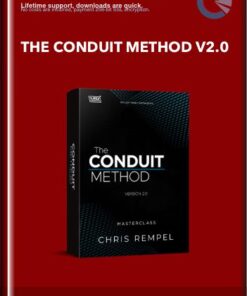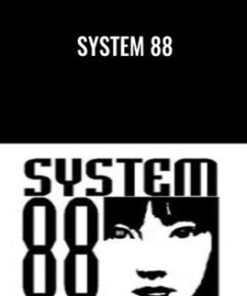5 Hours 24 Minutes
Previous treatments for hoarding have been vastly ineffective due in part to a lack of formal definition of the diagnostic criteria, deficits of applied research, faulty case conceptualization, and scant treatment interventions. With the recent release of the DSM-5, in which Hoarding Disorder has finally been identified as its own disorder, appropriate clinical treatment interventions can now be guided by these revisions.
Purchase Compulsive Hoarding: Conceptualizing and Treating the Chaos – Pam Kaczmarek courses at here with PRICE $199.99 $85
A Complex and Unique Disorder
Previous treatments for hoarding have been vastly ineffective due in part to a lack of formal definition of the diagnostic criteria, deficits of applied research, faulty case conceptualization, and scant treatment interventions. With the recent release of the DSM-5, in which Hoarding Disorder has finally been identified as its own disorder, appropriate clinical treatment interventions can now be guided by these revisions. The continual increase of media attention brings an onslaught of clients seeking clinical interventions from professional mental health care providers who are vastly unprepared to treat this rapidly growing and misunderstood population. Although hoarding has traditionally been considered a symptom dimension within OCD and OCPD, recent research findings has proved otherwise and led to the latest DSM-5 revisions. Patients who hoard do not respond similarly to the psychotherapies or pharmacological treatments used for other OCD manifestations. Instead, a multimodal cognitive-behavioral and medication approach has been shown to have a much greater success rate in the treatment of compulsive hoarding.
This recording helps participants conceptualize the chaos specific to hoarding and learn treatment strategies that actually improve patient outcomes. Course work delves into the phenomenology associated with hoarding and OCD and investigates their similarities and differences. This recording covers both assessment and interventions, including case studies that illustrate the findings and prepare you to truly help your clients who hoard. Participants benefit from videos, group exercises, and adult learning theory methods. Don’t miss this valuable opportunity.
- Explore the new DSM-5 criteria for Hoarding Disorder and distinguish Axis I OCD from Axis II Obsessive Compulsive Personality Disorder (OCPD)
- Recognize the behavioral and cognitive symptoms associated with hoarding
- Identify the unique complex characteristics of hoarding, including brain structural differences
- Examine the differences between organic hoarding (brain damage) and the hoarding in Hoarding Disorder
- Gain an overview of cognitive-behavioral and biopsychosocial perspectives on hoarding including etiological theories, possible vulnerability factors, course of disorder over the lifetime, and the impact of age and gender
- Determine what diagnostic tools can assist in proper assessment
- Discuss specific interventions for hoarding that are used by top researchers and clinicians
- Gain confidence with treatment planning for hoarding clients
FOUNDATIONS OF HOARDING: A UNIQUE, COMPLEX DISORDER
- Brief history of hoarding
- Previous working and current definition of hoarding disorder with possible case vignette
- Understanding what leads to clutter
- Understanding what’s most commonly hoarded
- Understanding how items collect and are acquired
- Common hoarding features
- Identify unique hoarding characteristics
- Neurocognitive deficits commonly seen in hoarding
- Behaviors of compulsive hoarding
- Cognitive Behavioral Therapy (CBT) model for hoarding
- Compulsive hoarding vs. OCD
- Hoarding vs. collecting: compare & contrast
- Hoarding in context to animal hoarding
- Risk factors in compulsive hoarding
- Trauma and& hoarding
- Basic demographics
- Impact of culture
- Distinguish Axis I OCD from Axis II Obsessive- Compulsive Personality Disorder (OCPD)
- Understanding obsessions vs. compulsions in OCD
ACCURATE ASSESSMENTS AND PROPER DIAGNOSIS
- Nosological considerations and clinical considerations that led to the DSM-5 reclassification of hoarding
- Co-morbid diagnoses—including Axis I & II disorders
- Organic hoarding vs. Hoarding Disorder
- Level of insight in hoarding vs. non-hoarding OCD
- Thinking styles, beliefs about possessions, and avoidance patterns
- Egosyntonic vs Egodystonic considerations
- Assessment tools specific to hoarding
TREATMENT PLANNING
- Understanding the role of insight in treating compulsive hoarding
- Demos and simulated exercise
- Stages of change and examples with compulsive hoarders
- Motivational interviewing for hoarding clients
- Brief discussion about brain structure differences
- Medications
- Value of psycho-education
INTERVENTIONS FOR HOARDING BEHAVIOR
- Session sequence suggestion
- CBT treatment planning model outline
- Treating acquiring and discarding
- Treating organization problems
- Overview of cognitive restructuring with hoarding patients
- Downward Arrow technique
- Behavioral experiment as tool with hoarders
- Somatic awareness as possible novel strategy
- Compulsive hoarding group work
- Watch outs!
- Must dos!
- Minimizing Relapse
Tag: Compulsive Hoarding: Conceptualizing and Treating the Chaos – Pam Kaczmarek Review. Compulsive Hoarding: Conceptualizing and Treating the Chaos – Pam Kaczmarek download. Compulsive Hoarding: Conceptualizing and Treating the Chaos – Pam Kaczmarek discount.
Purchase Compulsive Hoarding: Conceptualizing and Treating the Chaos – Pam Kaczmarek courses at here with PRICE $199.99 $85
 30 Days To An Organized Home – Get Organized Gal
1 × $25.00
30 Days To An Organized Home – Get Organized Gal
1 × $25.00 Zumba Fitness - Total Body Transformation System (2008)
1 × $28.00
Zumba Fitness - Total Body Transformation System (2008)
1 × $28.00 The Conduit Method v2.0 - Chris Lazy Marketer
1 × $55.00
The Conduit Method v2.0 - Chris Lazy Marketer
1 × $55.00 SS Language and Conversation Course - Dave Riker
1 × $62.00
SS Language and Conversation Course - Dave Riker
1 × $62.00 10 Activities to Enhance Social-Emotional Literacy in the Classroom: Transform Student Behavior from Chaos to Calm - Lynne Kenney
1 × $19.00
10 Activities to Enhance Social-Emotional Literacy in the Classroom: Transform Student Behavior from Chaos to Calm - Lynne Kenney
1 × $19.00 Certificate Course in Cognitive Behavioral Therapy for Insomnia (CBT-I): Evidence-based Insomnia Interventions for Trauma, Anxiety, Depression, Chronic Pain, & more - Colleen E. Carney & Meg Danforth
1 × $125.00
Certificate Course in Cognitive Behavioral Therapy for Insomnia (CBT-I): Evidence-based Insomnia Interventions for Trauma, Anxiety, Depression, Chronic Pain, & more - Colleen E. Carney & Meg Danforth
1 × $125.00 System 88 - Docc Hilford & Dr. Lisa Chin
1 × $25.00
System 88 - Docc Hilford & Dr. Lisa Chin
1 × $25.00 [BIG Collection Real Estate] Real Estate Web Academy – Great Real Estate Giveaway
[BIG Collection Real Estate] Real Estate Web Academy – Great Real Estate Giveaway
 'Quantum' Chakra Clearing and Balancing Series - Jonette Crowley
'Quantum' Chakra Clearing and Balancing Series - Jonette Crowley
 "Is Your Soul Allowing You To Heal?" -- All 7 Recordings in the Series (6 Hours of Audio Clearings)
"Is Your Soul Allowing You To Heal?" -- All 7 Recordings in the Series (6 Hours of Audio Clearings)
 Advanced Chakra Work
Advanced Chakra Work
 Become a Modern Master
Become a Modern Master